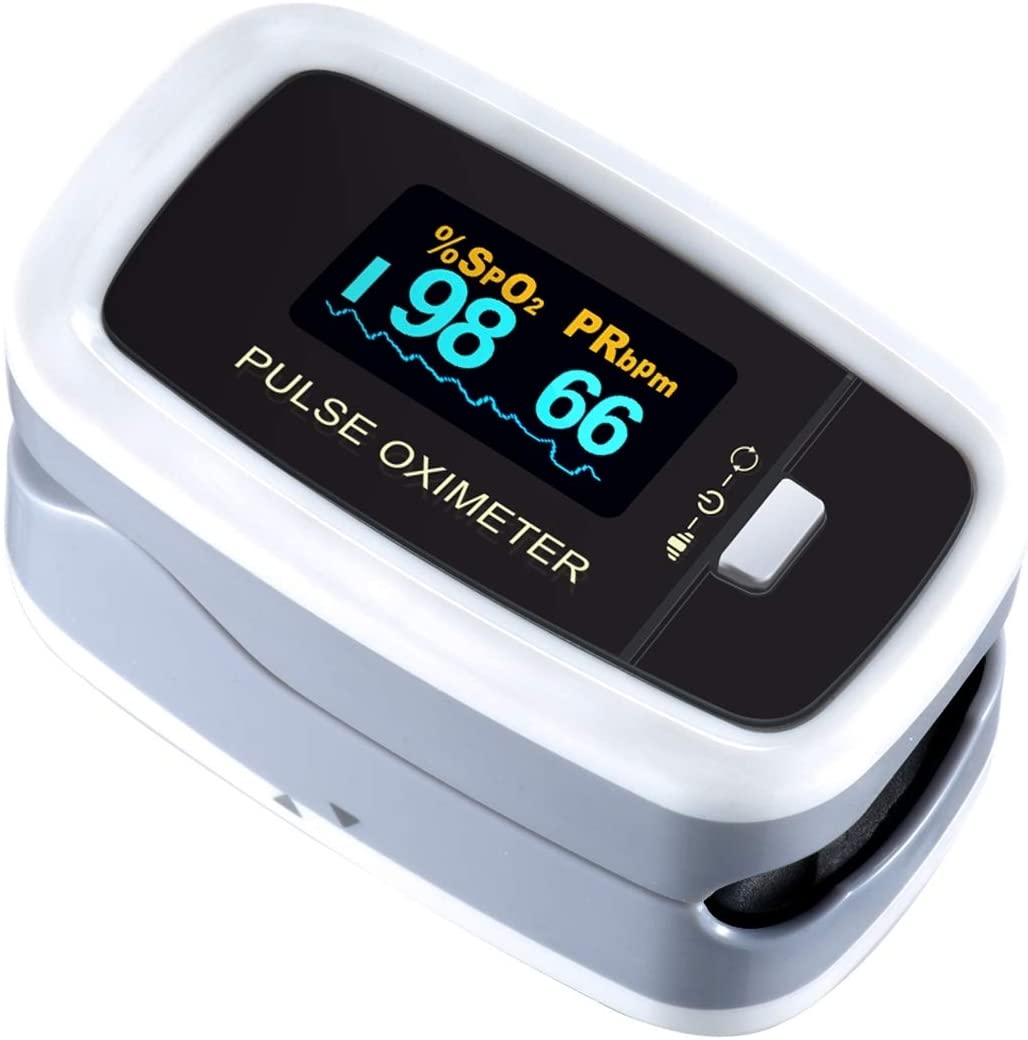Products |
Finger Pulse Oximeter
By
Published: Feb 01, 2021
Category:
Health
NOTE FROM A READER #1: When I read your piece on the pulse oximeter early last year, I purchased one right away and used it daily. Many many months later, my mother lost her sense of taste and I immediately gave her my oximeter. She monitored her oxygen levels religiously and when she dropped to 91 we made our way to the hospital. She ended up having a pretty serious case of COVID with a two week hospital stay. She is home now and recovering very well. We continue to use the oximeter to monitor her recovery. I just wanted to share our story to say thank you from the bottom of our hearts.
NOTE FROM A READER #2: “C— is coming home from the hospital. If he hadn’t checked himself every day with the oximeter…”
A finger pulse oximeter is designed for people who want to know their SpO2 (Blood Oxygen Saturation Levels). You also learn your pulse rate, but that’s a bonus.
How it works: The device is placed on a fingertip. It passes two wavelengths of light through the finger to a photodetector that “measures the changing absorbance at each of the wavelengths.”
It’s used in emergency rooms to measure the oxygen levels of COVID-19 patients. Low oxygen levels may indicate that coronavirus patients have pneumonia -— and require immediate medical attention —- even before they feel a shortness of breath. [NOTE: Pulse Oximeters may be less accurate for Black people. From the Times: “Pulse oximetry overestimated oxygen levels 3.6 percent of the time in white patients, but got it wrong nearly 12 percent of the time in Black patients.”]
The reasons to get one:
– Normal oxygen levels could signal that you don’t need to visit a hospital.
– COVID-19 patients can have pneumonia for days before they develop a shortness of breath. Low oxygen levels are a way to detect these cases earlier — without a coronavirus test or doctor’s visit.
To buy the well-reviewed MIBEST Finger Pulse Oximeter from Amazon for $19.95, click here.
Here’s the science…
From the Times last year:
We are just beginning to recognize that COVID pneumonia initially causes a form of oxygen deprivation we call ‘silent hypoxia’ — ‘silent’ because of its insidious, hard-to-detect nature.
The coronavirus attacks lung cells that make surfactant. This substance helps the air sacs in the lungs stay open between breaths and is critical to normal lung function. As the inflammation from Covid pneumonia starts, it causes the air sacs to collapse, and oxygen levels fall. Yet the lungs initially remain “compliant,” not yet stiff or heavy with fluid. This means patients can still expel carbon dioxide — and without a buildup of carbon dioxide, patients do not feel short of breath.
Patients compensate for the low oxygen in their blood by breathing faster and deeper — and this happens without their realizing it. This silent hypoxia, and the patient’s physiological response to it, causes even more inflammation and more air sacs to collapse, and the pneumonia worsens until oxygen levels plummet. In effect, patients are injuring their own lungs by breathing harder and harder. Twenty percent of Covid pneumonia patients then go on to a second and deadlier phase of lung injury. Fluid builds up and the lungs become stiff, carbon dioxide rises, and patients develop acute respiratory failure.
Silent hypoxia progressing rapidly to respiratory failure explains cases of Covid-19 patients dying suddenly after not feeling short of breath. (It appears that most Covid-19 patients experience relatively mild symptoms and get over the illness in a week or two without treatment.)
Widespread pulse oximetry screening for Covid pneumonia —- whether people check themselves on home devices or go to clinics or doctors’ offices -— could provide an early warning system for the kinds of breathing problems associated with Covid pneumonia.


